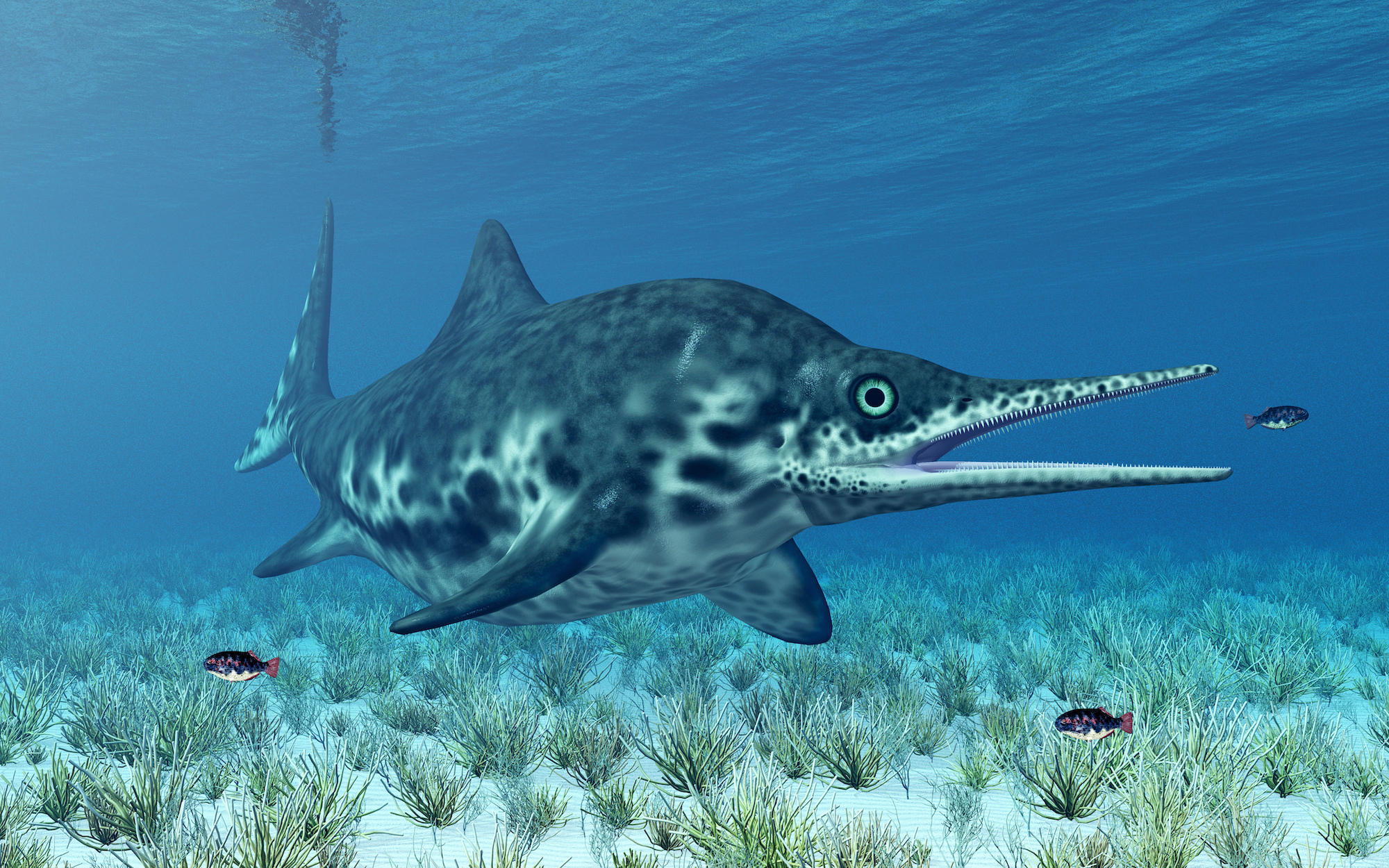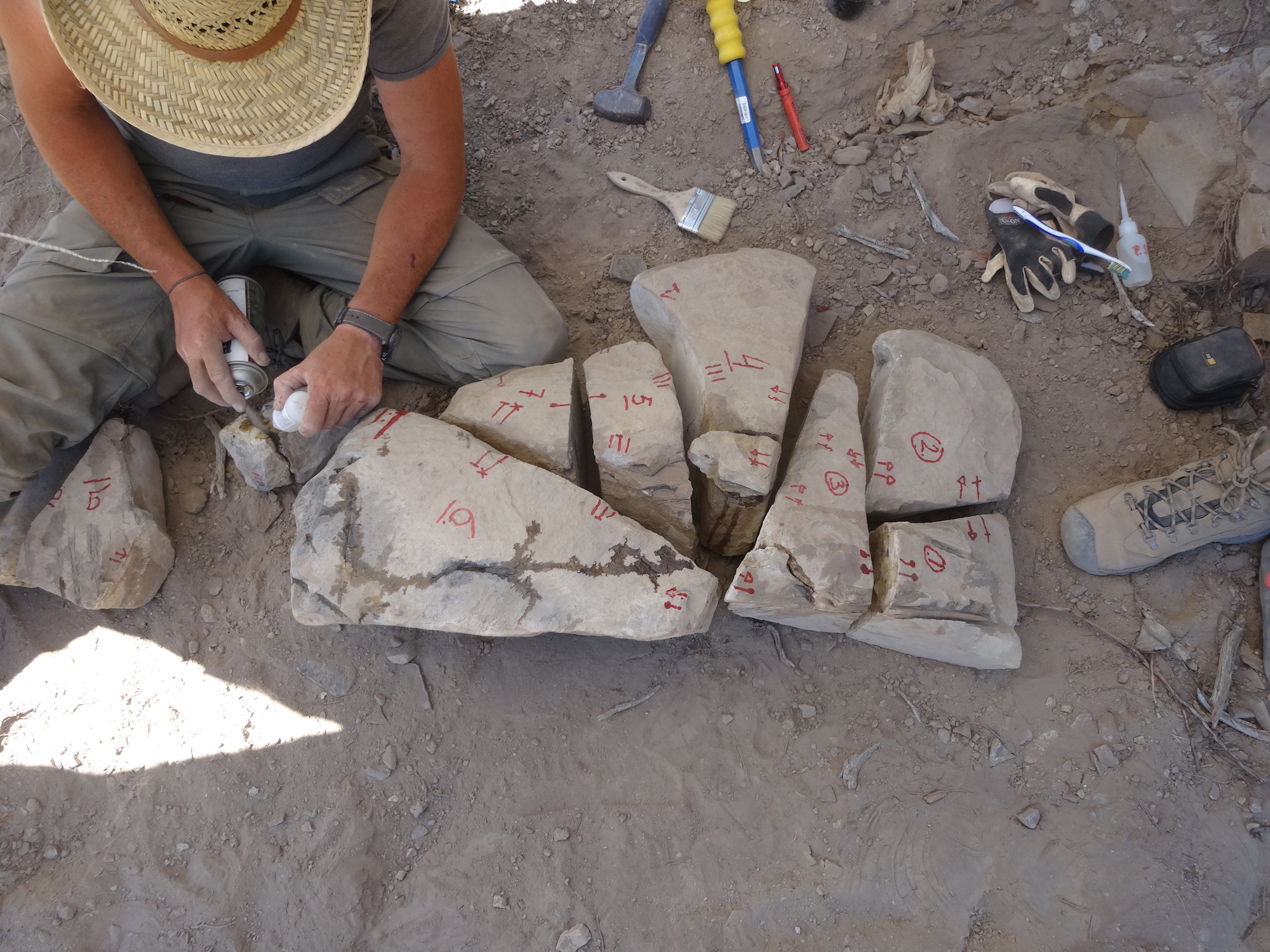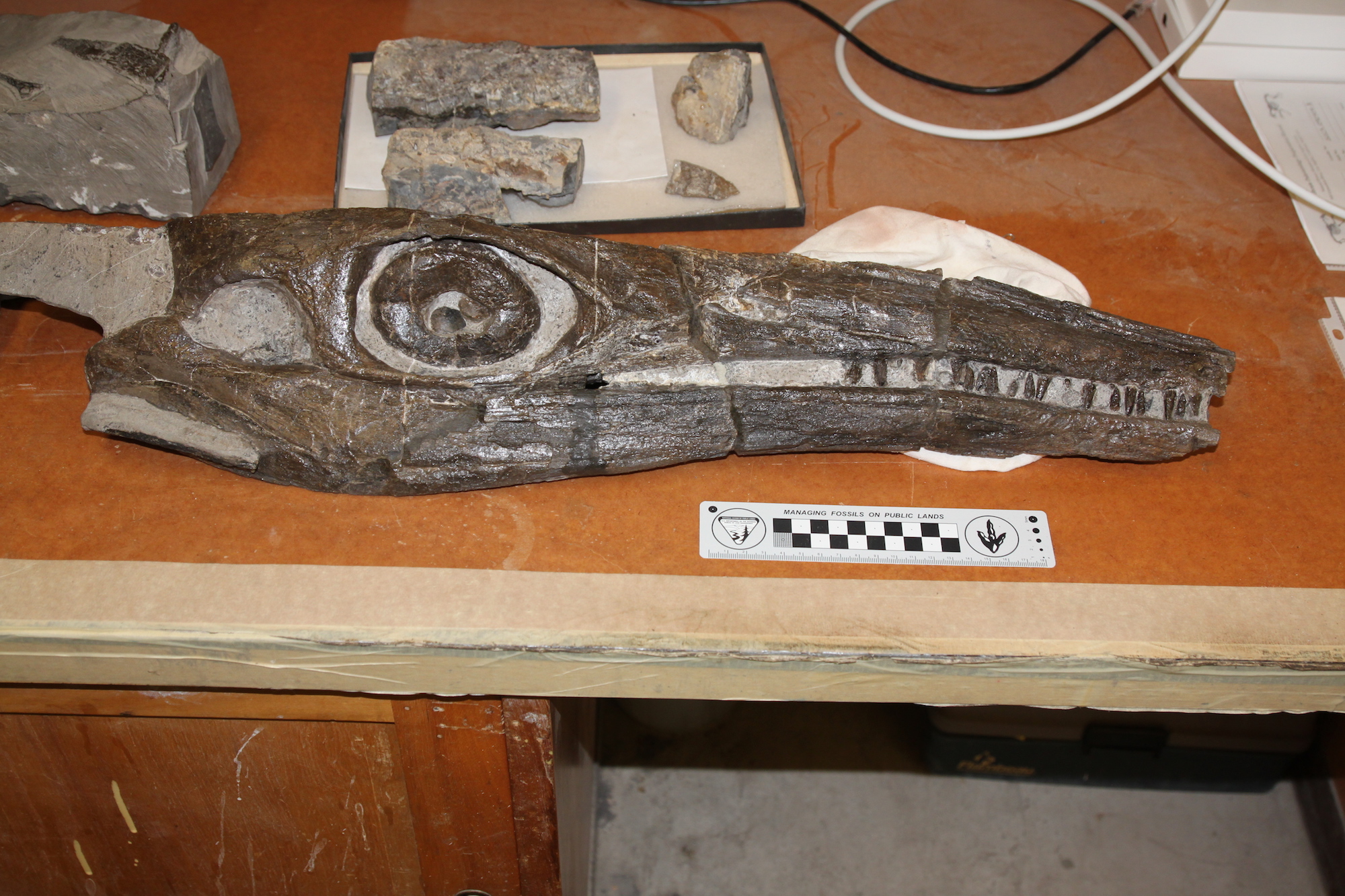Triassic sea monster was about to birth three little monsters before she died

About 246 million years ago, a pregnant sea monster died before her due date, perishing with at least three little unborn monsters inside her, a new study finds.
This creature, an ichthyosaur — a now-extinct reptile that lived during the dinosaur age and looked like a fierce dolphin — is the second-oldest pregnant ichthyosaur ever found, the researchers said.
Even though the fetuses died in utero, the position of their heads suggests they would have been born headfirst, like most land animals are. But evolutionary pressures likely later caused ichthyosaurs to switch to mostly breech births, said the study's senior researcher, P. Martin Sander, professor of vertebrate paleontology at the Institute of Geosciences at the University of Bonn.
Related: Image gallery: Photos reveal prehistoric sea monster
"When you're born underwater, then you want to delay independent breathing as much as you can," Sander told Live Science. "It makes a lot of sense to be born tailfirst and swim to the surface as late as possible, because then you have to breathe on your own."
The researchers found the remains of the pregnant ichthyosaur, who they nicknamed "Martina" after the senior researcher Martin Sander, on the penultimate day of their dig in Nevada in 2011. "We found it on one day when it was still nice," Sander said. "The next day it started snowing and that was the last day in the field."
Martina was likely about 14 feet (4.3 meters) long and had 1-inch-long (2.5 centimeters) teeth. In addition, while Martina fits into the genus Cymbospondylus, she's a new species. The team named that species duelferi, in honor of the fossil preparator Olaf Dülfer, "for his many practical contributions to Mesozoic marine reptile research," the researchers wrote in the study.
Get the world’s most fascinating discoveries delivered straight to your inbox.

Image gallery





When Martina was alive, all of the continents were part of the giant landmass Pangaea. At that time, Nevada was on the west coast of Pangaea in the low latitudes, Sander said. But Martina didn't hang out by the coast; she was pelagic, meaning she lived in the open ocean, he noted.
"This is an interesting specimen that adds more evidence of high diversity of ichthyosaurs from the Favret Formation," an ichthyosaur hotspot in Nevada, said Judy Massare, a professor emerita in the Earth Sciences Department at The College at Brockport, State University of New York, who was not involved in the study. In fact, Sander and his colleagues more recently found another ichthyosaur with a 6.5-foot-long (2 m) skull in the same region.
At the time of discovery, Martina was the oldest-known pregnant ichthyosaur in the world. But the group wasn't able to collect, prepare and publish their findings until now, and in the meantime an even older pregnant ichthyosaur — the oldest known fossil of reptile live birth — was found in China. That fossil belonged to the genus Chaohusaurus and dated to 248 million years ago, according to the 2014 study published in the journal PLOS One.
Breech birth
Like whales, ichthyosaurs evolved from land animals that returned to the sea. And, like most animals that make the switch from land to sea, evolving to bear live young (instead of laying eggs) is pretty common, Sander said. "It's a basic adaptation to returning to the sea," he said. Among today's marine reptiles, sea turtles are one of the few that still lay eggs on land, Sander noted.
Related: Image gallery: Pile of turtle fossils unearthed
It's not clear when ichthyosaurs acquired the ability to give live birth, but based on Martina and the Chaohusaurus, "it's clear that this ability to give birth to live young had evolved very early on," Sander said.
However, both Martina and the Chaohusaurus individual likely birthed their babies headfirst, Sander said. In contrast, ichthyosaurs from later time periods, such as the Jurassic period, tended to give birth in the breech position, as is evidenced by dozens of fossil finds in southern Germany, Sander said.
It's hard to know exactly when breech births in ichthyosaurs became their norm, but it was probably in the Triassic period, Sander said. That said, scientists may never know.
"The problem is, the last 30 million years of the Triassic are sort of a black hole; we have almost no fossils in the sea," Sander said. "We have a good dinosaur record, but there are almost no marine reptiles."
The study was published online April 20 in the Journal of Systematic Paleontology.
- In Images: Graveyard of Ichthyosaur Fossils in Chile
- Photos: Uncovering One of the Largest Plesiosaurs on Record
- Image Gallery: Ancient Monsters of the Sea
Originally published on Live Science.
OFFER: Save 45% on 'How It Works' 'All About Space' and 'All About History'!
For a limited time, you can take out a digital subscription to any of our best-selling science magazines for just $2.38 per month, or 45% off the standard price for the first three months.

Laura is the managing editor at Live Science. She also runs the archaeology section and the Life's Little Mysteries series. Her work has appeared in The New York Times, Scholastic, Popular Science and Spectrum, a site on autism research. She has won multiple awards from the Society of Professional Journalists and the Washington Newspaper Publishers Association for her reporting at a weekly newspaper near Seattle. Laura holds a bachelor's degree in English literature and psychology from Washington University in St. Louis and a master's degree in science writing from NYU.



